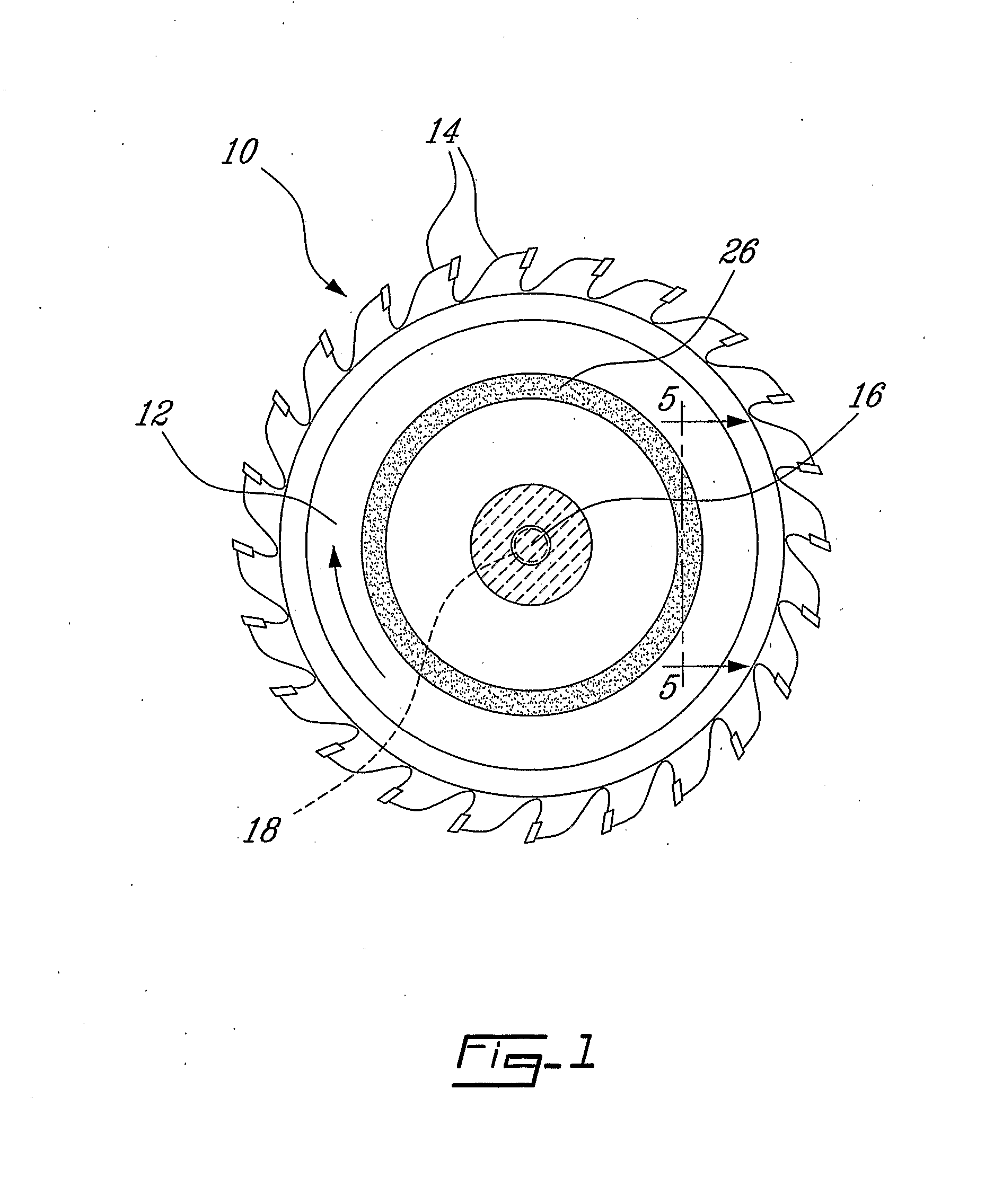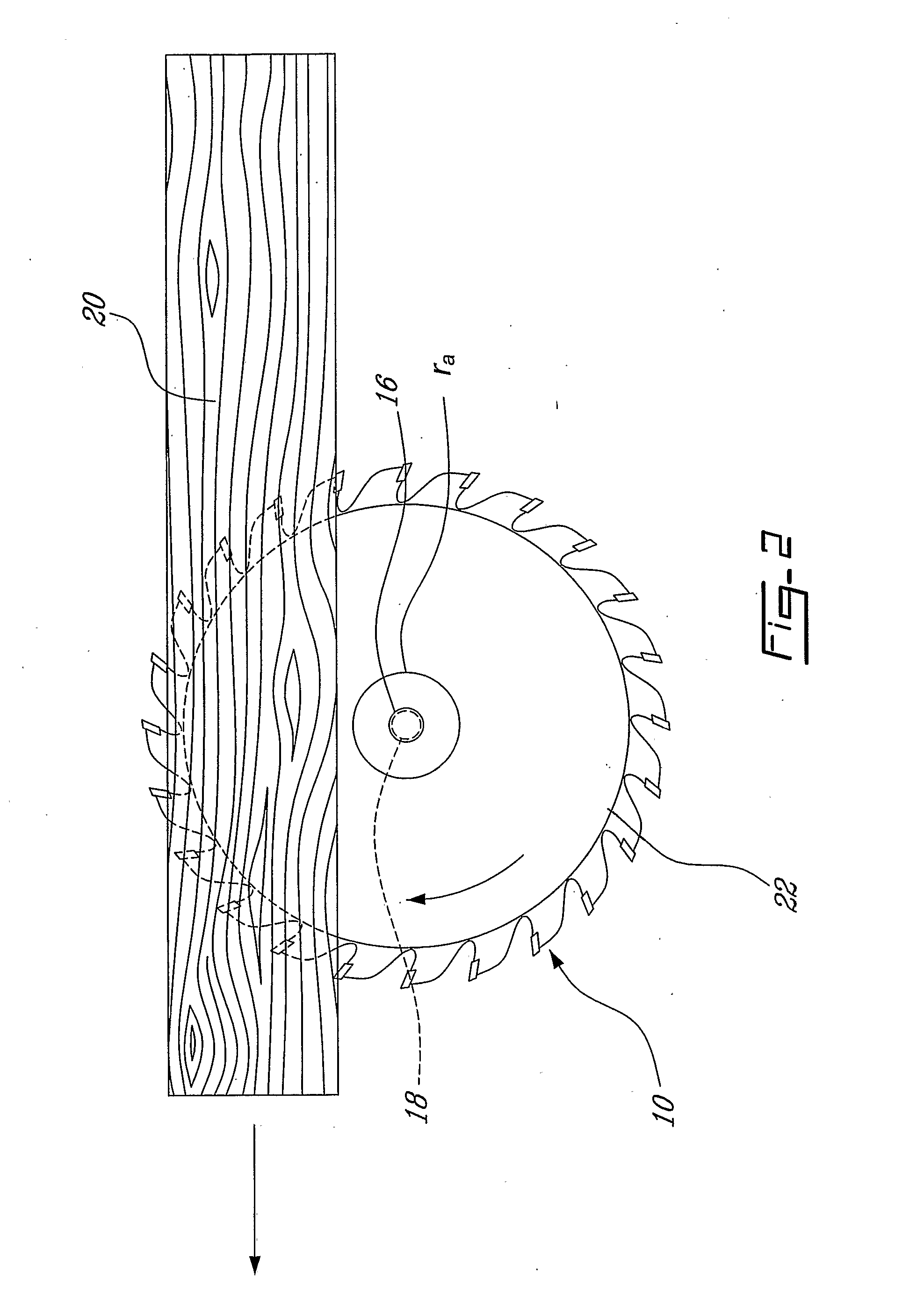Method and Mechanism for Increasing Critical Speed in Rotating Disks and Reducing Kerf at High Speeds in Saw Blades
a technology of rotating disks and critical speed, which is applied in the direction of metal sawing devices, sawing devices, sawing apparatus, etc., can solve the problems of lowering the critical speed of the blade, large transverse deflection, and blade failure, and achieve the effect of increasing the critical speed of the rotating disk
- Summary
- Abstract
- Description
- Claims
- Application Information
AI Technical Summary
Benefits of technology
Problems solved by technology
Method used
Image
Examples
first embodiment
[0045] Referring now to FIGS. 6A and 6B, in a first embodiment, the inserts 26 and depressions 28, 30 are generally rectangular in shape. The inserts 26 are attached to the blade 10 towards the outer edges 36, 38 via a series of fasteners as in 40, for example rivets or screws or the like. The inserts 26 straddle a slit 42 in the blade 10, the slit 42 illustratively in a direction radial to the axis of rotation. The inserts 26 are heat treated such that when in the austenite phase the outer edges 36, 38 are brought closer together. Therefore, as the periphery 22 of the blade 10 is heated, forces are brought to bear on the blade between the fasteners as in 40 (in the direction indicated by the arrows) and the gap of the radial slit 42 is reduced, thereby reducing the hoop stresses introduced by the peripheral heating.
second embodiment
[0046] Referring now to FIGS. 7A and 7B, in a second embodiment, the inserts 26 and depressions as in 28, 30 are annular in shape. One or more inserts as in 26 are press fit into the annular depressions as in 28, 30. The inserts are heat treated such that when in the austenite phase they expand in a radial direction outward. Therefore, as the periphery 22 of the blade 10 is heated, forces in a outward radial direction (as indicated by the arrows arrange around the periphery 22) are introduced, thereby countering the hoop stresses introduced by the peripheral heating. Of note is that although the present invention has been discussed hereinabove in regards to blades or disks where the periphery has a higher temperature than centre of the blade or disk, the present invention may also be applied to increase the stability of uniformly heated blades or disks, or alternatively for pretensioning disks which operate at room or lower temperatures. For example, the insert(s) 26 as described he...
PUM
| Property | Measurement | Unit |
|---|---|---|
| temperature | aaaaa | aaaaa |
| thick | aaaaa | aaaaa |
| thick | aaaaa | aaaaa |
Abstract
Description
Claims
Application Information
 Login to View More
Login to View More - R&D
- Intellectual Property
- Life Sciences
- Materials
- Tech Scout
- Unparalleled Data Quality
- Higher Quality Content
- 60% Fewer Hallucinations
Browse by: Latest US Patents, China's latest patents, Technical Efficacy Thesaurus, Application Domain, Technology Topic, Popular Technical Reports.
© 2025 PatSnap. All rights reserved.Legal|Privacy policy|Modern Slavery Act Transparency Statement|Sitemap|About US| Contact US: help@patsnap.com



